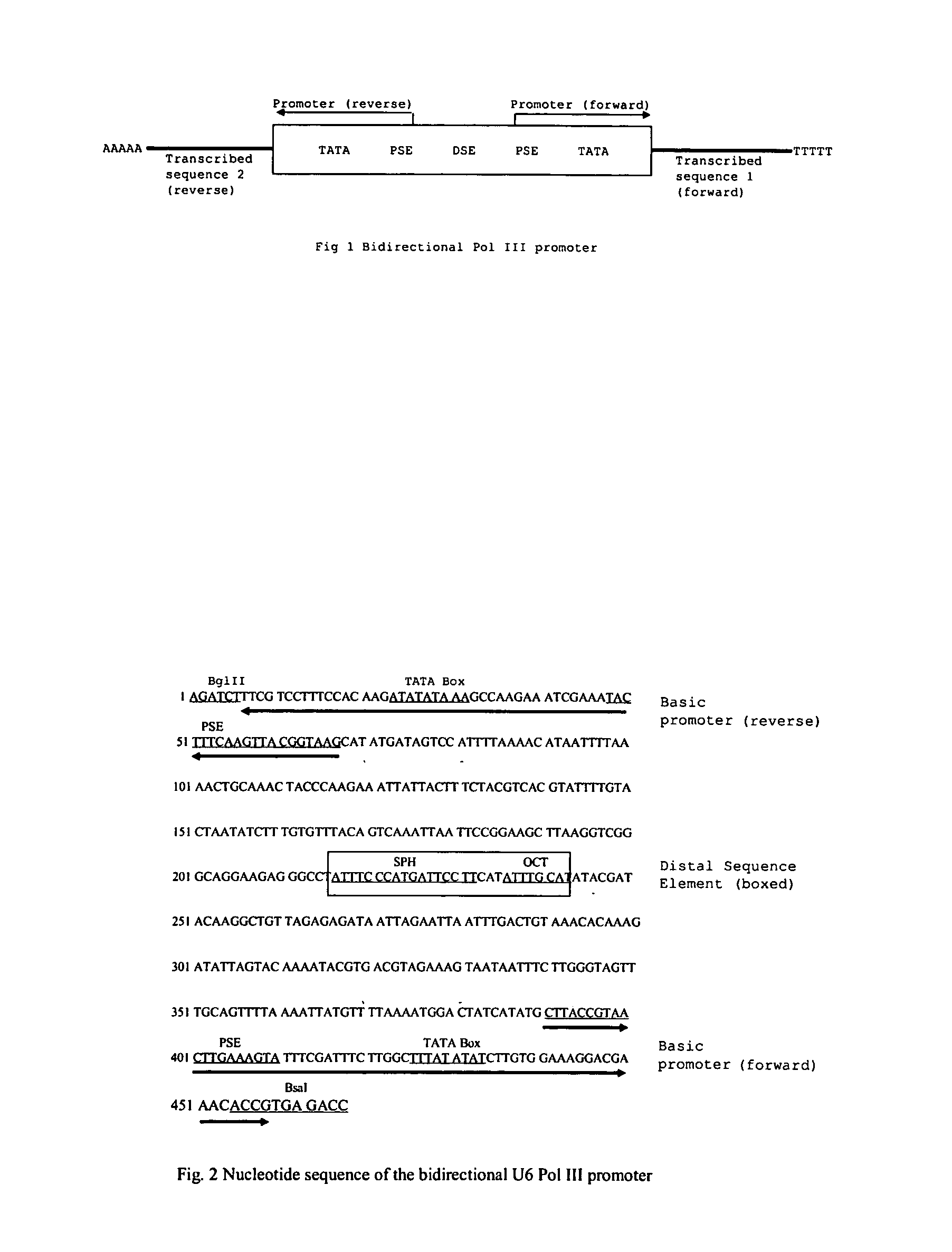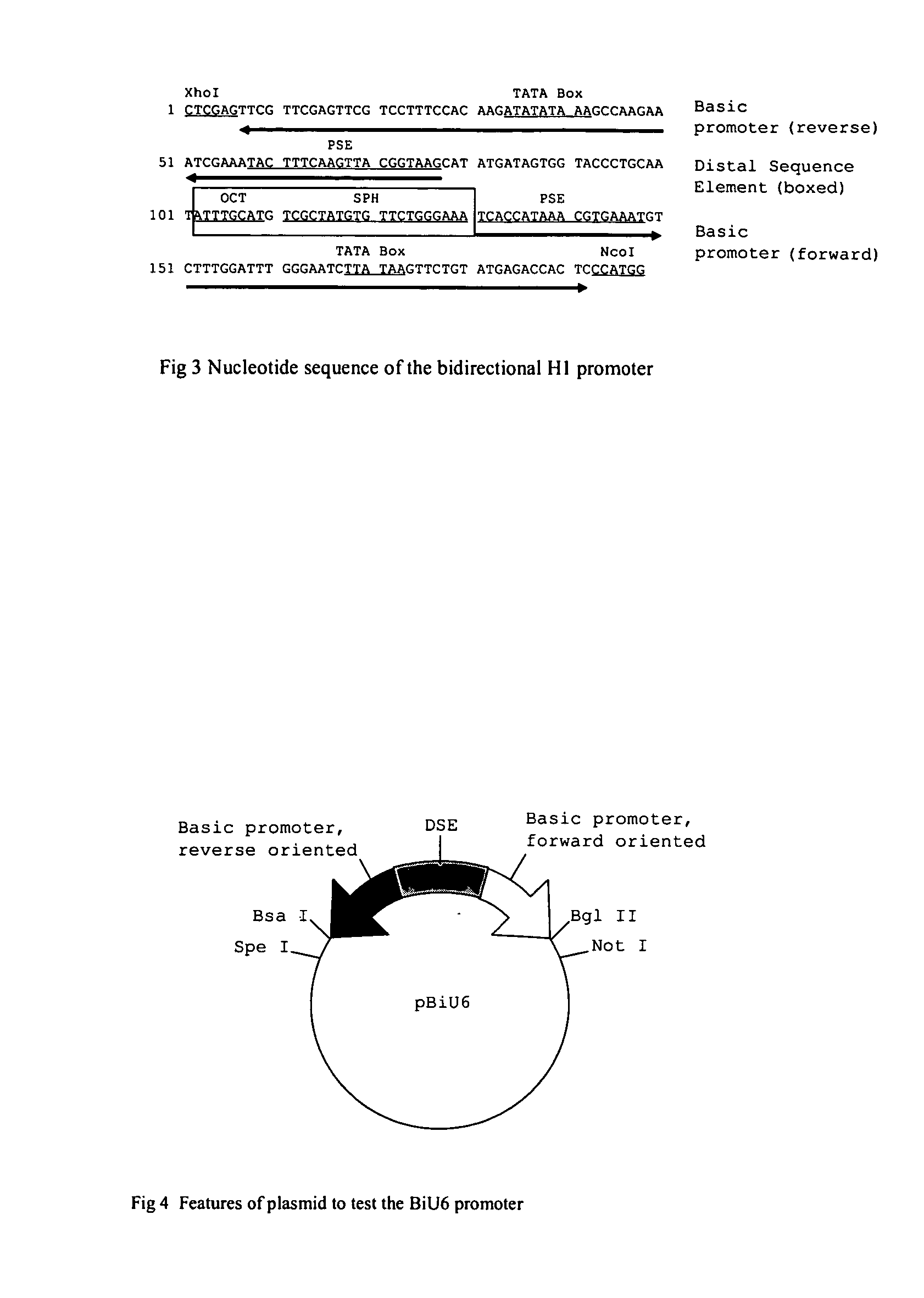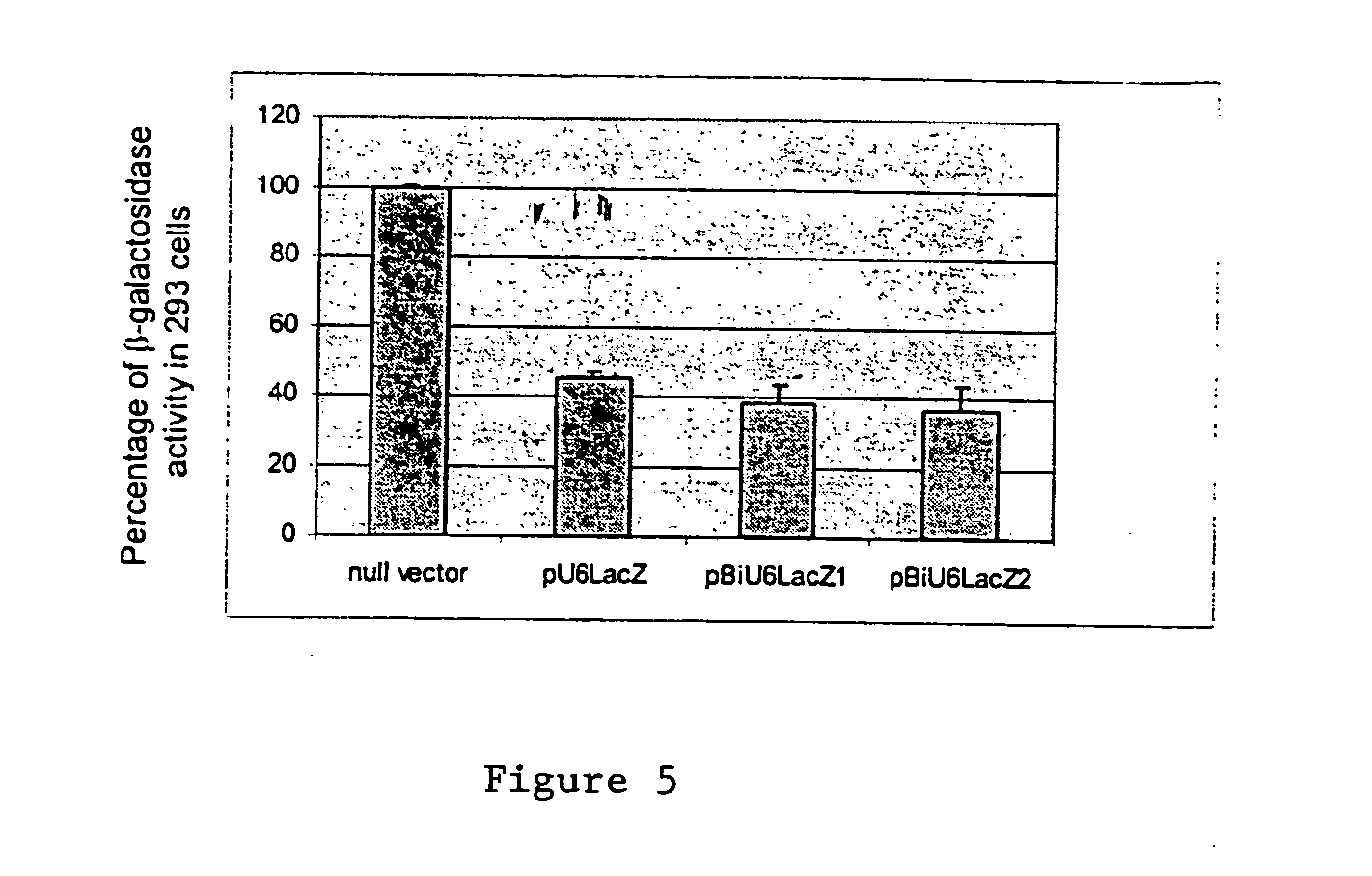Bidirectional promoters for small RNA expression
a promoter and rna technology, applied in the field of rna polymerase promoters, can solve the problems of inability to direct the expression of two or more short rna sequences, low efficiency of rna delivery into cells, and inability to target multiple genes, etc., to achieve efficient and/or multi-gene targeted rna silencing
- Summary
- Abstract
- Description
- Claims
- Application Information
AI Technical Summary
Benefits of technology
Problems solved by technology
Method used
Image
Examples
example 1
Construction of Bidirectional U6 Promoter
[0053] The PCR method was used to amplify human U6 promoter from the genomic DNA extracted from human 293 cells by using the following primers (forward primer: ′5-CGCAAGCTTAAGGTCGGGCAGGAAGAGGGCCTA-3′; reverse primer: 5′-CCACTAGTGGGTCTCACGGTGTTTCGTCCTTTCCAC-3. In these two primers, restriction site Hind III, Bsa I and Spe I (underlined) were designed to facilitate the cloning, respectively. PCR fragment was cut with Hind III and Spe I and ligated into the Hind III / Spe I sites of pLEP4CMV vector to obtain a plasmid pLEPU6.
[0054] In order to amplify the minimal U6 promoter that contains the TATA box and PSE, two PCR primers (forward primer: ′5-CGCAAGCTTCCGGAATTAATTTGACTGTAAACAC-3′; reverse primer: 5′-GGAATTCTAGCGGCCGCGAAGATCTTTCGTCCTTTCCACAAGATA-3′) were synthesized. In these two primers, restriction site Hind III, EcoR I, Not I and Bgl II were added, respectively. PCR amplified fragment was cut by Hind III and EcoR I and was ligated into the ...
example 2
Construction of Expression Vectors Containing shRNA Against Reporter Gene, β-galactosidase
[0056] To demonstrate that transcription proceeds in both directions, shRNA expression vectors were constructed. First pLEPU6lacZ was generated by inserting a pair of shRNA oligos against β-galactosidase gene (Lacz-sense: 5′-ACCGGCGTTTCATCTGTGGTGCTTCTAGAGAGCACCACAGATGAAACGCCCTTTTTG-3′; Lacz-antisense:5′-GATCCAAAAAGGGCGTTTCATCTGTGGTGCTCTCTAGAAGCACCACAGATGAAACG C-3′) into pLEPU6 vector predigested with Spe I and Bsa I. The resultant plamid was termed pU6lacZ. The same shRNA sequence also was used to construct two plasmids, pBiU6lacZ1 and pBiU6lacZ2. The oligos encoding the shRNA were synthesized, annealed and cloned into the forward direction of bidirectional U6 promoter at pBiU6 digested with Spe I and Bsa I to generate pBiU6lacZ1 (forward). Similarly, the synthetic oligonucleotides with appropriate restriction ends were made and inserted into Not I / Bgl II sites of pBiU6 to obtain the expressio...
example 3
Effective Silencing Expression of β-galactosidase Gene by pBiU6 Plasmids
[0057] The efficiency of the bidirectional promoters to direct expression of two RNAi was evaluated by measuring a reporter gene, β-galactosidase activities in human 293 cells or Mouse L cells. Unless otherwise emphasized in the description, all results are either a representative of three independent experiments or a summary of results from three experiments.
[0058] pU6lacZ, pBiU6lacZ1 and pBiU6lacZ2 plasmid DNA was purified using Qiagen Plasmid Purification Kit and diluted to 0.2 μg / μl with TE buffer. Before performing the transfecttion experiment, the human 293 cells were split into 6 well plates to reach 80% confluence. The transfection was carried out using Invitrogen's Lipofectamine 2000 according to manufacturer's instructions. Briefly, one ug of pU6lacZ, pBiU6lacZ1 or pBiU6lacZ2 DNA was cotransfected into 293 cells with 1 ug of expression vector, pLEPCMV-lacZ, which expressed β-galactosidase at high lev...
PUM
| Property | Measurement | Unit |
|---|---|---|
| Size | aaaaa | aaaaa |
Abstract
Description
Claims
Application Information
 Login to View More
Login to View More - R&D
- Intellectual Property
- Life Sciences
- Materials
- Tech Scout
- Unparalleled Data Quality
- Higher Quality Content
- 60% Fewer Hallucinations
Browse by: Latest US Patents, China's latest patents, Technical Efficacy Thesaurus, Application Domain, Technology Topic, Popular Technical Reports.
© 2025 PatSnap. All rights reserved.Legal|Privacy policy|Modern Slavery Act Transparency Statement|Sitemap|About US| Contact US: help@patsnap.com



